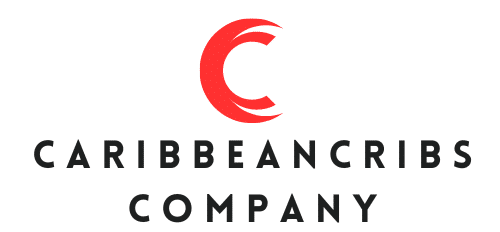Top no-code front end builder tools to try in 2024

Tired of complex coding? Discover the game-changers: the top no-code front end builder tools of 2024. These platforms—Weweb, Flutter Flow, and Bubble—are revolutionizing web development with limitless customization, native app creation, and robust features. Whether you're a beginner or a seasoned developer, dive into a world where creating stunning websites and apps is simpler than ever before.
Top No-Code Front End Builder Tools to Try in 2024
Weweb stands out in the no-code landscape for its limitless customization capabilities and ease of use. This platform allows users to exercise precise control over design elements, enabling the creation of highly personalized web applications. Weweb also offers tailored pricing plans, starting with a free version and extending to premium options from $39 per month, making it adaptable to various project scales and budgets.
A lire en complément : Master web security with real-world simulations and labs
Flutter flow: firebase integration and native app creation
Flutter Flow is a top choice for those looking to develop mobile applications without writing code. This tool integrates seamlessly with Firebase, enhancing its functionality with real-time databases, authentication, and cloud storage. Users can create native apps that perform efficiently across different devices. Additionally, Flutter Flow's scalable pricing starts at $30 per month, catering to both small projects and larger, more complex applications.
Softr: utilizing airtable or Google Sheets
Softr leverages Airtable or Google Sheets as a backend, simplifying the process of building web apps. This integration allows users to manage data efficiently while focusing on the front-end design. Softr offers a free plan for individual projects and premium plans starting at $49 per month, providing scalable solutions for different user needs.
Lire également : How Is Technology Optimizing In-Store Retail Logistics for Faster Restocking?
Adalo: interactive mobile apps
Adalo enables the creation of interactive mobile apps without any coding knowledge. The platform supports direct publication to the App Store and Google Play. Adalo’s free plan includes 200 records per app and 1,000 monthly app actions, with premium plans starting at $36 per month. This makes it an excellent choice for developers looking to launch functional mobile apps quickly.
Key features of leading no-code tools
One of the most appealing aspects of no-code tools is their intuitive drag-and-drop interfaces. These visual development tools allow users to build websites and applications by simply dragging elements onto a canvas, eliminating the need for coding knowledge. Platforms like Weweb and Adalo excel in this area, providing user-friendly web design tools that streamline the creation process, making it accessible even for beginners.
Integration with popular tools
Integration capabilities are crucial for enhancing the functionality of no-code platforms. Many leading no-code tools, such as Softr and Stacker, offer seamless integrations with popular tools like Airtable and Google Sheets. This feature allows users to leverage existing data sources, simplifying the process of backend management while focusing on front-end design. Such integrations are vital for businesses looking to maintain efficiency and data consistency across various applications.
Customization and personalization
Customization is a key feature of top no-code tools. Platforms like Weweb stand out for their limitless customization capabilities, allowing users to exercise precise control over design elements. This level of customization is essential for creating highly personalized web applications that meet specific user requirements. Similarly, Bubble's robust platform supports complex application development, making it a preferred choice for professional developers.
Automation and efficiency
Automation tools like those offered by Zapier enhance the efficiency of business processes. With support for over 7,000 app integrations, Zapier's automation features streamline workflows across various departments, from marketing to IT. The platform's enterprise-grade security and AI-enhanced functionalities make it a powerful tool for organizations aiming to boost productivity through automation.
These key features make no-code tools indispensable for modern web and app development. By leveraging drag-and-drop interfaces, integration capabilities, flexible pricing, customization options, and automation, users can create sophisticated applications without the need for extensive coding knowledge. Explore more about these tools on no-code frontend builder platforms to find the best fit for your project.
Latest trends in no-code web design for 2024
Artificial Intelligence (AI) is revolutionizing web design automation in 2024. Modern no-code platforms are integrating AI to streamline design processes, reducing the time and effort needed to create visually appealing websites. AI algorithms can suggest design elements, optimize layouts, and even predict user behavior to enhance the overall user experience. This trend not only democratizes web design but also ensures that even those without technical expertise can create professional-quality websites.
Enhanced responsive design capabilities
Responsive design remains a critical aspect of web development, and 2024 sees significant advancements in this area. No-code tools are now offering enhanced responsive design capabilities, allowing websites to seamlessly adapt to various screen sizes and devices. Platforms like Adalo 2.0 are leading the charge with features that ensure apps and websites look great on any device, from smartphones to desktops. This is essential for maintaining user engagement and satisfaction in an increasingly mobile-first world.
Proliferation of app templates and premium components
The availability of app templates and premium components is another trend shaping the no-code landscape. These pre-built elements provide a head start for users, enabling them to quickly assemble functional and aesthetically pleasing websites or apps. Platforms such as Adalo and Glide offer a wide range of templates and components, catering to different industries and use cases. This not only accelerates the development process but also ensures a high degree of customization and functionality.
These trends highlight the continuous evolution of no-code tools, making web and app development more accessible, efficient, and sophisticated. By leveraging AI, enhancing responsive design, and utilizing pre-built components, users can stay ahead in the competitive digital landscape of 2024.
